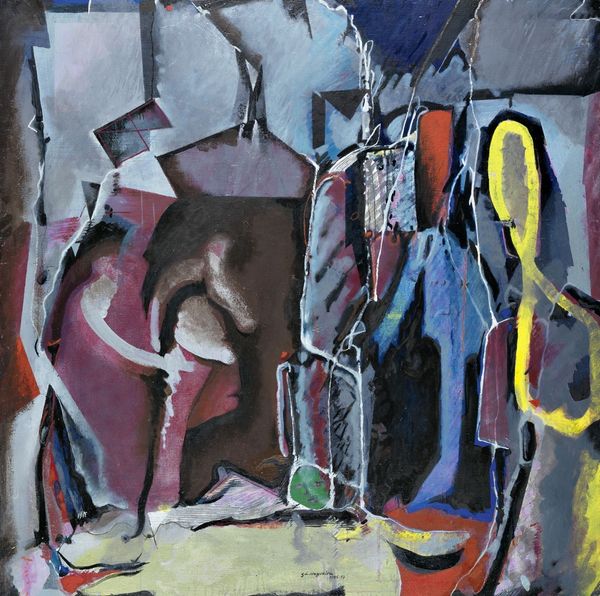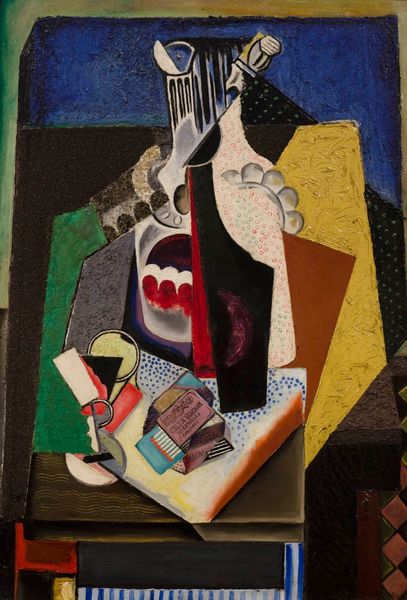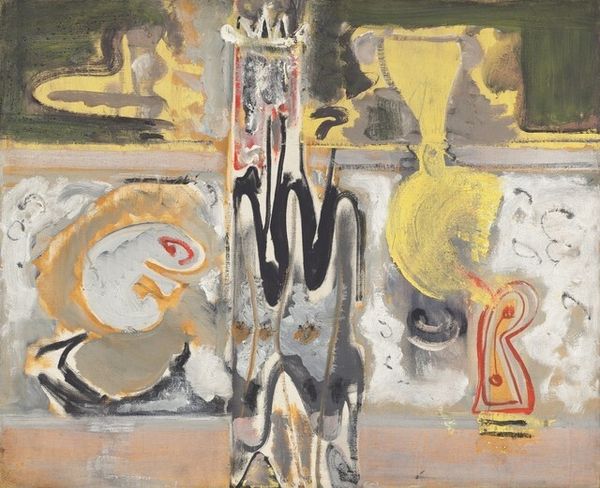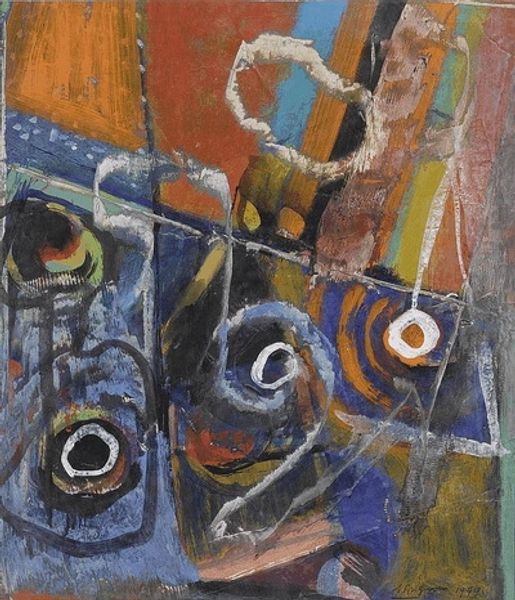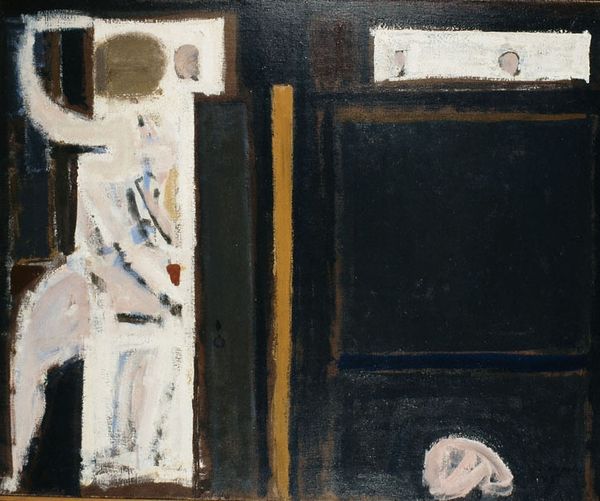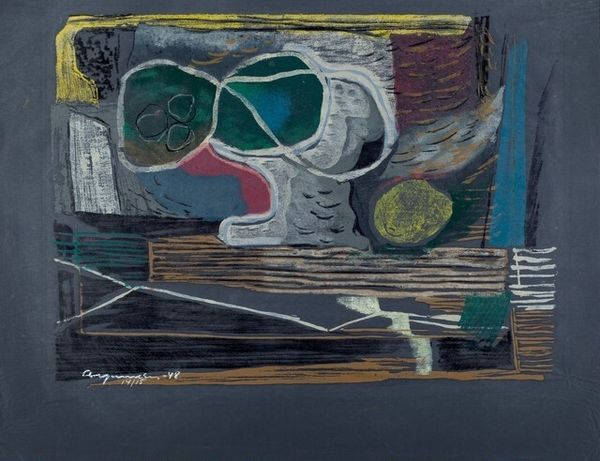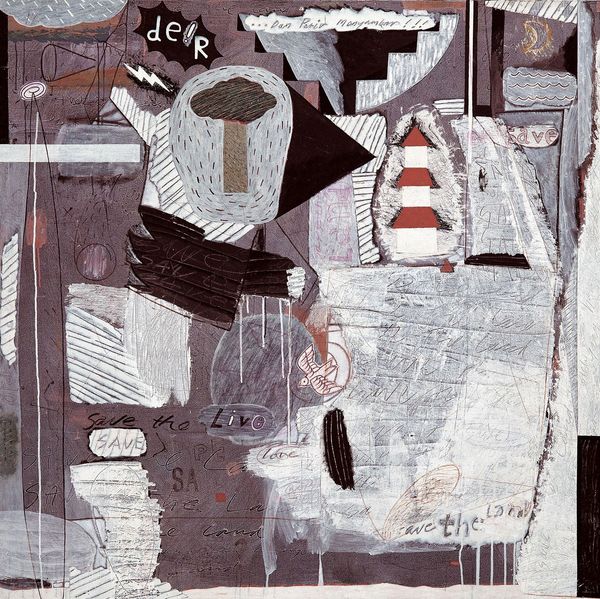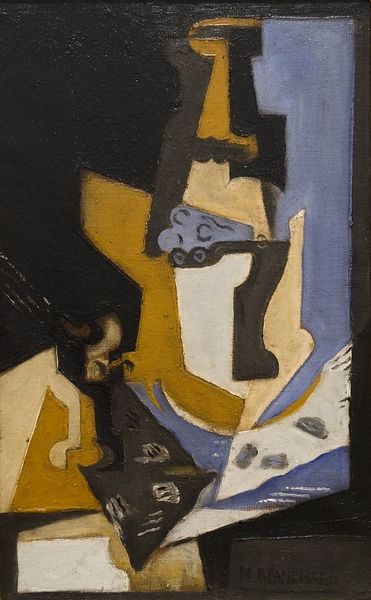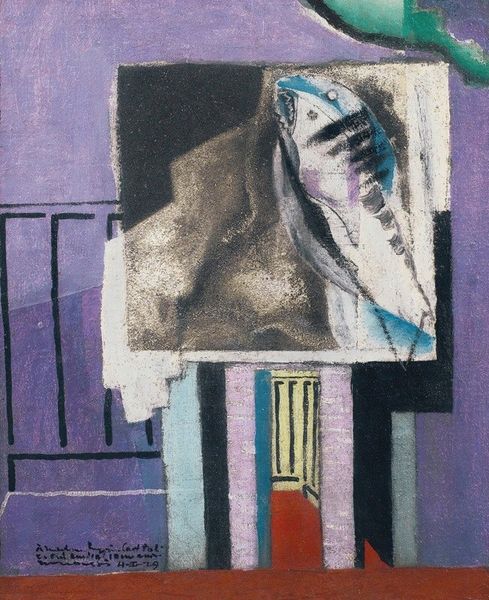
painting, oil-paint
#
portrait
#
painting
#
oil-paint
#
figuration
#
oil painting
#
acrylic on canvas
#
modernism
Copyright: Dimitris Mytaras,Fair Use
Editor: Here we have Dimitris Mytaras’s “Studio,” painted in 1993, using oil paint. The longer I look at it, the more dreamlike and fragmented it becomes. The different scenes seem to coexist in a space that doesn't quite make sense. What do you see in this piece, and how do you think Mytaras uses these disconnections? Curator: The fragmentation you observe is key. I see it as Mytaras grappling with representation itself, specifically in the wake of the sociopolitical shifts of the late 20th century. The figures, divorced from conventional context, feel almost ghostly. Consider how the rise of mass media impacted perceptions of identity and reality during that period. Do you think these spectral images might be mirroring that sense of displaced identity and the deconstruction of collective narratives? Editor: That’s a really interesting way to consider it. I was so focused on the individual scenes; I didn't consider them representing broader societal shifts. It's almost as though he's acknowledging that our perceptions of self are becoming increasingly layered and disjointed. Curator: Precisely. Think about the traditional role of the artist’s studio – a space of creation, yes, but also of reflection. Mytaras seems to be interrogating that very concept. How can a space, physical or mental, contain such diverse, sometimes conflicting, realities? Perhaps he's also challenging the authority of a singular artistic perspective in an era demanding multifaceted representation. Editor: So, it's not just about the individual images within the painting, but how their arrangement reflects a bigger conversation about identity, media, and art itself. I guess what I’m wondering is whether the dog could be said to ‘anchor’ a deeper meaning? Curator: It could represent loyalty and a steadfast connection to place, something that might have felt valuable to the artist as societies become more transient. But perhaps that’s also my reading and how my interpretation has changed as the political landscapes shifted in our current era. Editor: I see, there are just so many layers here that reflect modern life. Thank you! I’ve learned a lot by seeing how societal factors reflect artwork on display.
Comments
No comments
Be the first to comment and join the conversation on the ultimate creative platform.
